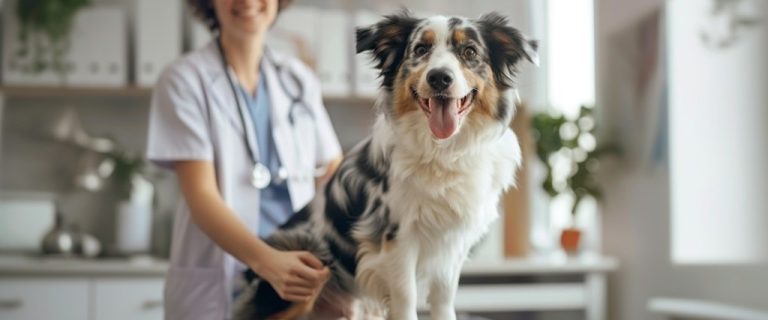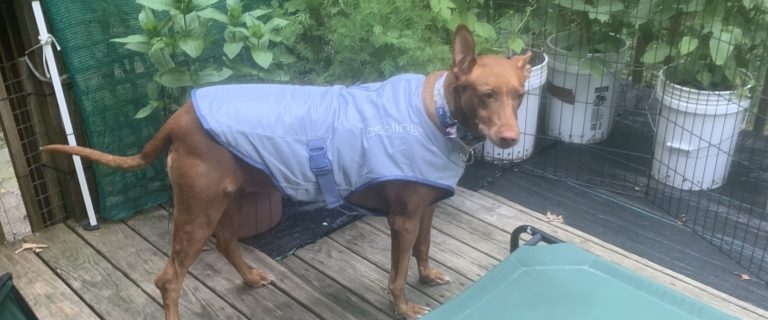Eating too fast is a common problem among all dog owners. There’s a reason that the phrase “wolfing it down” exists. And while this way of eating may be the result of evolution and genetic imprinting, that doesn’t make it ideal for today’s dog who gets plenty to eat. In fact, for the modern dog, eating too fast can be dangerous.
Related: Bloat Prevention and Proper Weight with a Slow Feed Bowl
Eating Too Fast – The Low Down on High-Intensity Eating
There are a few different things to consider when talking about dogs and their compulsion to suck down food like a vacuum cleaner. Today, we’ll go over why they do it, what it can mean for their health, and how to slow them down.
Why Dogs Eat so Fast
For many dogs, scarfing down their food has nothing to do with how good or bad it tastes. It’s all about getting as much into their bellies as quickly as possible. It’s a genetic imperative. This drive to devour as much as they can as fast as they can comes from their days as wolves living in a pack. In a pack, the strongest eats the most, and the weakest eats the least. The only way to be strong is to get as much food as possible in as little time as possible. So a dog that eats too fast is just following Mother Nature’s blueprint.
The problem with that is that dogs no longer need that drive. Today’s dog has it easy. They have plenty of food and water, and their meals are regular. However, in all the breeding for the thousands of years that dogs have been domesticated, the drive to consume as much food as possible has never literally been bred out of dogs. So even though modern dogs don’t have to worry about where their next meal will come from, they eat as they will.
What Eating Too Fast Does to a Dog
For most dogs, eating too fast won’t do anything. It won’t even give them a stomach ache. However, for other dogs, this tendency of inhaling their food can lead to an acute health emergency called bloat. This is a condition in which the dog eats, drinks, or does both too fast. Their stomach is inundated with a large amount of food or liquid and air from the rapid intake. This causes the stomach to distend or bloat, which can lead to the stomach flipping. This cuts off the blood supply to the stomach and is deadly if not rectified immediately.
While all dogs can conceivably bloat, it happens most often in a large breed or deep chested dogs. Boxers, Akitas, German Shepherds, and most giant breeds are susceptible to bloat. Believe it or not, Bassett Hounds also commonly get bloat.
How to Address Eating Too Fast and Bloat
*Affiliate links included below.
If you have a medium sized to small breed dog, chances are you’ll never have to worry about bloat. However, if you own a giant breed or a breed with a deep chest, bloat will need to stay on your radar at all times. So what can owners of big dogs and deep chested dogs do to reduce the chance that their dogs will get this painful and potentially deadly problem?
Preventing Stomach Flipping After Bloat
The first thing owners of giant breed dogs or dogs with deep chests should do tack their dog’s stomachs during spaying or neutering. Tacking the stomach is a procedure in which the vet opens up the dog’s abdomen and sutures the outer layer of the stomach to the rib cage of the dog. This will form a scar which keeps the stomach in place in case of bloat. This tacking prevents the stomach from flipping after a dog bloats. So while tacking won’t prevent bloat, in most cases it will prevent death.
Preventing Vacuum Eating
The next thing owners will need to address the actual act of eating too fast. There are special dog bowls on the market designed to prevent dogs from scarfing their food down too quickly. These bowls often require a dog to navigate around obstacles and allow for only a few pieces of kibble at a time to be eaten. This is the go-to method for most owners and vets to prevent eating too fast.
Reducing Bloat Risk
There are some dogs that just cannot be stopped in their quest to eat everything as fast as possible. In these cases, its better for owners to just roll with it and do what they can to prevent bloat. A good place to start is to get an elevated feeding station that houses a food and water bowl. These stations will keep your dogs head more in line with his torso and prevent as much air gulping.
Another good thing to do if your dog simply will not stop inhaling his food is to feed him canned food. Dry food is more prone to cause bloat because it expands in the stomach. If you’re unable to stop your dog from eating too fast, this is a great way to reduce bloat chances.
Eating Too Fast can be Risky for Rover
Eating too fast is a big problem because it can lead to such a deadly condition. If you get a specialty bowl and tack your dog’s stomach, you will drastically reduce your dog’s chance of developing bloat and the stomach flipping that can go along with it. If you can’t get your dog to stop eating too fast – and some dogs just cannot be stopped – get a feeding platform to reduce air intake while eating, switch to wet food, and make sure to tack your dog’s stomach.
Bloating can be dangerous and deadly, but the above tips to help stop your dog from eating too fast or to reduce his risk of bloat if you can’t get him to slow down can drastically improve your dog’s odds of never bloating.
Have you ever dealt with issues with your dog eating too fast? Share your experiences in the comments!
Author
-

A former Veterinary Assistant at Southwest Animal Care Hospital, Ben is an animal lover, blogger, and all-around geek. Along with writing for DogVills, Ben runs his own virtual assistant company, BizzyBim.
View all posts



